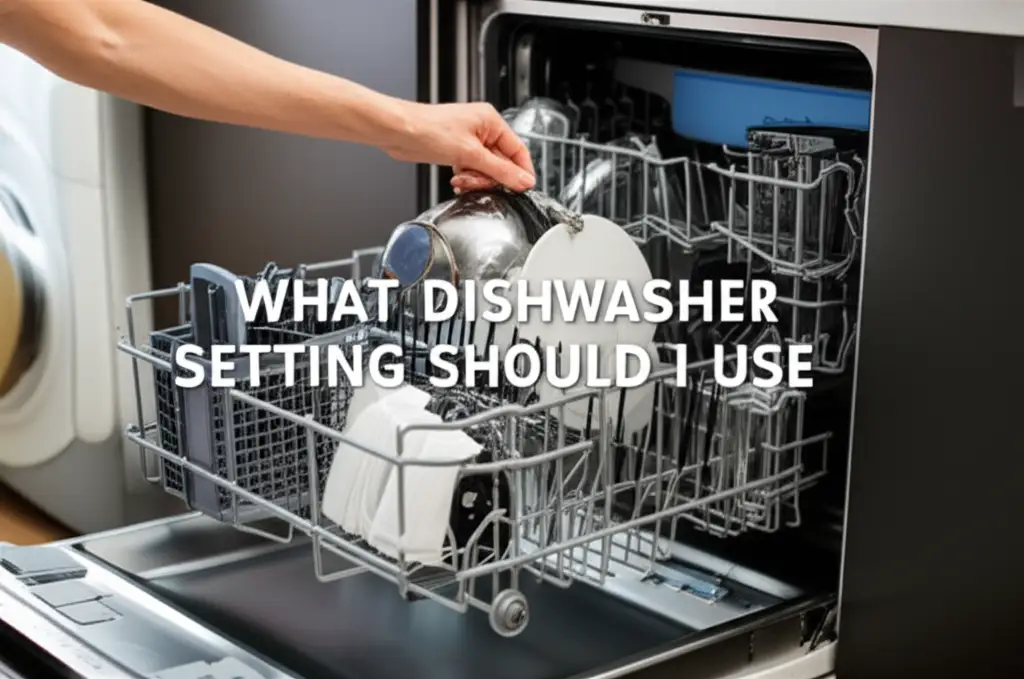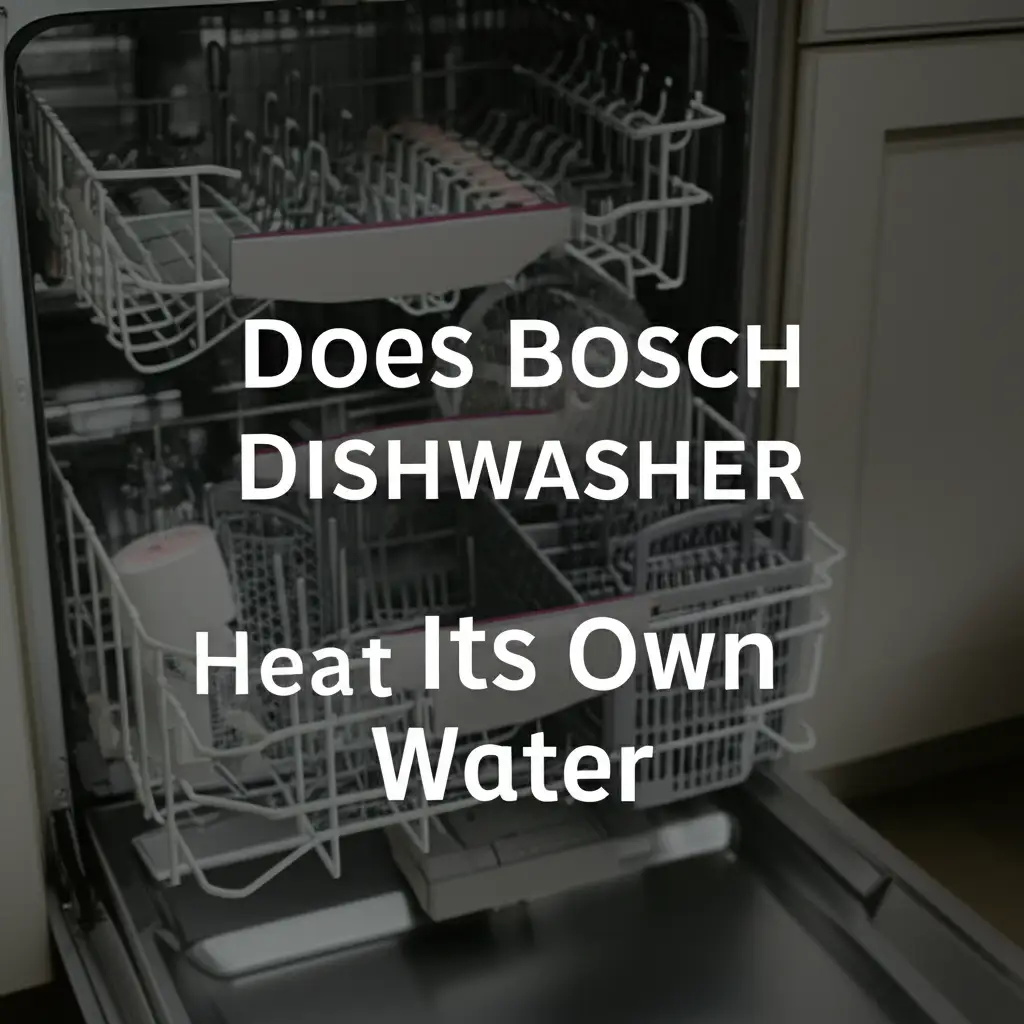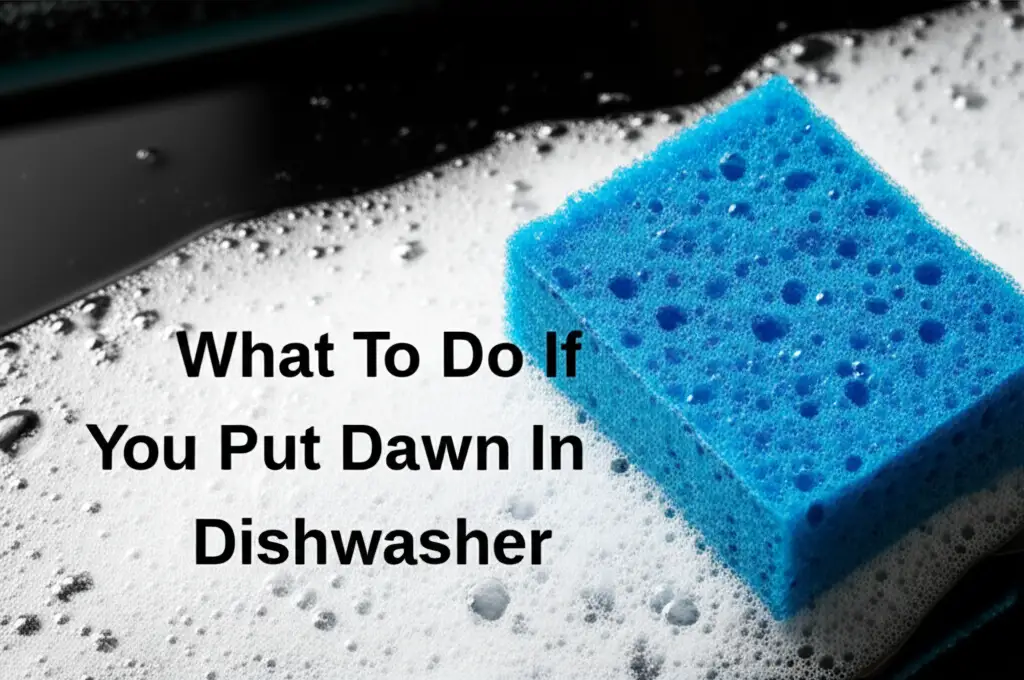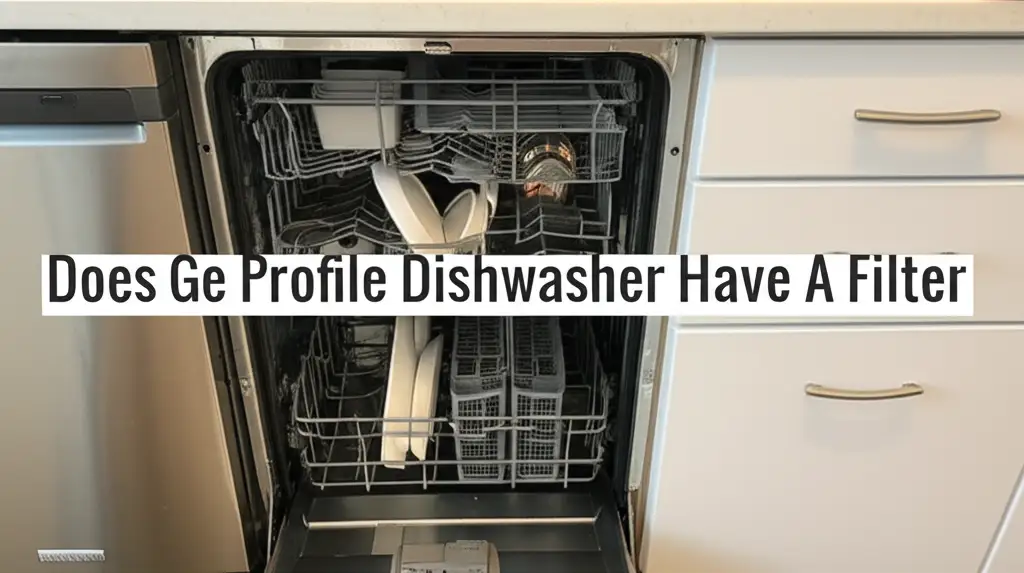· Elira Thomsen · Home Appliances · 17 min read
How Long Is The Warranty On A Kitchenaid Dishwasher

How Long Is The Warranty On A Kitchenaid Dishwasher
Your KitchenAid dishwasher is a significant investment for your home. You want it to last. Understanding its warranty is a key part of protecting that investment. Many people wonder, “How long is the warranty on a KitchenAid dishwasher?” Knowing the specifics helps you prepare for any issues that may arise. This guide will explain the standard coverage, optional extensions, and what your warranty means for repairs. We will also cover how to register your appliance and make a claim. This information helps you get the most out of your KitchenAid dishwasher.
Takeaway
- KitchenAid dishwashers typically come with a 1-year limited warranty covering parts and labor.
- Specific components, like the stainless steel tub and inner door liner, often have longer coverage.
- Register your dishwasher after purchase to simplify future warranty claims.
- Extended warranty plans are available to provide coverage beyond the standard period.
- Keep your proof of purchase and maintain your appliance well to ensure warranty validity.
KitchenAid dishwashers generally come with a one-year limited warranty that covers parts and labor for defects in materials or workmanship. Beyond the first year, some specific components, like the stainless steel tub and inner door liner, often carry a longer limited warranty, typically for five years or even for the lifetime of the product, depending on the model.
Understanding the Standard KitchenAid Dishwasher Warranty
When you buy a new KitchenAid dishwasher, it comes with a basic warranty. This standard KitchenAid dishwasher warranty protects you from defects. It covers issues with materials or how the appliance was made. This means if something breaks due to a manufacturing flaw, KitchenAid will fix it.
The common warranty period for a KitchenAid dishwasher is one year. During this first year, KitchenAid usually covers both parts and the labor needed for repairs. This is helpful if a component fails early on. You will not have to pay for the replacement part or the technician’s time.
Some parts of your KitchenAid dishwasher might have longer coverage. For example, many KitchenAid dishwashers include a limited five-year warranty on certain components. This often includes the nylon racks and specific electronic controls. More premium models might even offer a lifetime limited warranty on the stainless steel tub and inner door liner. This shows KitchenAid’s confidence in the durability of these key parts. Always check your specific model’s warranty document for exact details. The warranty ensures your appliance works as it should after purchase.
It is important to know what your standard warranty covers. It protects you from initial manufacturing defects. It does not cover damage from misuse or accidents. Keep your appliance in good condition to maintain this protection. This initial coverage offers peace of mind.
- 1-Year Limited Warranty: Covers parts and labor for defects in materials or workmanship. This is the common baseline for new KitchenAid dishwashers.
- 5-Year Limited Warranty: Often applies to specific components like nylon racks or certain electronic controls. This extends protection for these crucial parts.
- Lifetime Limited Warranty: Available on select premium models for the stainless steel tub and inner door liner. This indicates very long-term coverage for these durable elements.
You should always refer to the specific warranty document that comes with your KitchenAid dishwasher. This document will list exact terms, conditions, and covered components. It is the most accurate source of information for your appliance’s protection.
Beyond the Basics: Extended Warranty Options for Your Dishwasher
While the standard KitchenAid dishwasher warranty provides initial protection, you might want more coverage. Extended warranty plans offer peace of mind beyond the first year. These plans can cover your appliance for several additional years. They protect you from unexpected repair costs after the manufacturer’s warranty expires.
Many retailers offer their own extended service plans. KitchenAid also provides options directly or through authorized service partners. These plans often cover parts and labor for a longer period. They can be a good investment, especially for expensive appliances like dishwashers. Repairing a dishwasher can be costly, with parts and technician fees adding up. An extended warranty can save you money if a major component fails.
When considering an extended warranty, look at what it covers. Does it include parts, labor, and potential diagnostic fees? Some plans might offer additional benefits like food spoilage reimbursement or surge protection. Compare different plans to find one that fits your needs and budget. Understand the deductible, if any, and the claim process. This ensures you make an informed decision.
Think about how long you plan to keep your dishwasher. If you expect to use it for many years, an extended warranty can be a smart choice. It can provide continuous protection. It also reduces financial stress if your dishwasher needs a costly repair. This extra coverage gives you confidence in your appliance’s longevity.
- Retailer Plans: Many stores offer extended service agreements at the point of sale. These can vary in length and coverage.
- Manufacturer Plans: KitchenAid or its partners may offer extended service contracts. These are often tailored specifically for KitchenAid appliances.
- Third-Party Providers: Independent companies specialize in appliance extended warranties. Research these providers carefully for their reputation and terms.
Always read the fine print of any extended warranty contract. Understand the exclusions, limitations, and how to file a claim. This ensures you know exactly what you are buying. It helps avoid surprises later on. Extended warranties are an optional layer of protection for your KitchenAid dishwasher.
What Your KitchenAid Dishwasher Warranty Covers (and Doesn’t Cover)
Understanding the scope of your KitchenAid dishwasher warranty is crucial. It details what problems KitchenAid will fix. It also lists what issues are not covered. Knowing this helps you avoid surprises when you need service.
Generally, your warranty covers defects in materials and workmanship. This means if a part breaks due to a fault in its manufacturing or assembly, KitchenAid will repair or replace it. This includes common issues like a malfunctioning control panel or a pump failure. If your dishwasher is not drying properly due to a manufacturing defect, the warranty should cover it. It aims to ensure the appliance performs as intended from the factory.
However, warranties have limitations. They typically do not cover damage caused by external factors. This includes misuse, accidents, or improper installation. If you use the wrong detergent or put something in the dishwasher that damages it, the warranty will not apply. For example, if you accidentally put regular dish soap in the machine, causing damage, it is unlikely to be covered. Knowing what to do if you put Dawn in your dishwasher can prevent non-warranty issues. Natural disasters, power surges, or unauthorized repairs also void the warranty.
Normal wear and tear items are usually excluded. This can include cosmetic damage like scratches or dents that do not affect performance. Consumable parts, such as filters that need regular cleaning or replacement, are also not covered. For example, if your dishwasher needs to drain and the issue is caused by food debris, that is a maintenance task, not a warranty repair. It is your responsibility to maintain your appliance. This includes regular cleaning and proper operation.
- Covered:
- Manufacturing defects in parts and labor.
- Failure of internal components due to factory flaws.
- Performance issues directly related to faulty construction.
- Not Covered:
- Damage from misuse, abuse, or negligence.
- Accidental damage (e.g., dropping, spills).
- Improper installation not done by an authorized service provider.
- Cosmetic damage that does not affect function.
- Normal wear and tear.
- Repairs by unauthorized technicians.
- Damage from external events like floods, fires, or power surges.
Always consult your specific warranty document for a complete list of exclusions. Understanding these terms helps you care for your KitchenAid dishwasher correctly. It also ensures you know when you can rely on KitchenAid for support.
Activating and Registering Your KitchenAid Dishwasher Warranty
Registering your new KitchenAid dishwasher is a simple but important step. It helps activate your warranty coverage. It also makes future claims much easier. Think of it as officially telling KitchenAid you own their product.
Most KitchenAid dishwashers come with a registration card in the box. You can fill this out and mail it in. The faster and often preferred method is to register online. Visit the official KitchenAid website. Look for a section dedicated to product registration. You will typically need your model number and serial number. These numbers are usually found on a label inside the dishwasher door. Knowing what KitchenAid dishwasher model numbers mean can help you quickly locate and understand this information.
Registering your product serves several purposes. First, it verifies your purchase date. This is crucial for determining if your appliance is still under warranty. Second, it allows KitchenAid to contact you for safety recalls or product updates. This keeps you informed about your appliance. Third, it streamlines the warranty claim process. If you ever need service, KitchenAid already has your appliance details on file. This saves time and hassle.
You should register your dishwasher as soon as possible after purchase. Do not wait for a problem to arise. While some warranties are valid with proof of purchase alone, registration simplifies things significantly. It provides a direct link between you and the manufacturer. This makes getting help smoother.
- Locate Information: Find your model and serial numbers. They are usually inside the dishwasher door frame or on the kick plate.
- Online Registration: Visit KitchenAid’s official website. Navigate to their product registration page.
- Mail-In Card: If an online option is not available or preferred, fill out and mail the registration card included with your appliance.
- Keep Proof: Always retain your original sales receipt or proof of purchase. This is your ultimate verification of the purchase date.
Registering your KitchenAid dishwasher takes only a few minutes. This small effort provides big benefits. It ensures your warranty is properly activated and ready when you need it. Do not skip this vital step for your new appliance.
Making a Warranty Claim: Step-by-Step Guide
If your KitchenAid dishwasher develops an issue covered by its warranty, you will need to file a claim. The process is straightforward if you have your information ready. Following these steps helps ensure a smooth experience.
First, identify the problem with your dishwasher. Try to describe it clearly. Note any error codes displayed. Next, gather your appliance details. You will need the model number, serial number, and date of purchase. Your original sales receipt is very important. This proves when you bought the dishwasher and helps determine if it is still under warranty.
Then, contact KitchenAid customer service. You can usually find their contact information on their website or in your appliance manual. Explain the problem clearly to the representative. Provide them with your model and serial numbers. They will verify your warranty status using the purchase date. Be ready to email or upload your proof of purchase if requested.
KitchenAid will then arrange for service. An authorized service technician will visit your home to diagnose and repair the issue. They will assess whether the problem falls under warranty coverage. If it is covered, KitchenAid will pay for the parts and labor. If the issue is not covered, the technician will inform you of the repair costs. You then decide whether to proceed with the repair.
Remember to follow any instructions given by KitchenAid or the technician. Make sure the dishwasher is accessible for service. Keep a record of all communication, including dates and names of people you spoke with. This helps if any disputes arise. The goal is to get your KitchenAid dishwasher working properly again.
- Identify the Problem: Clearly describe what is wrong with your dishwasher. Note any error codes.
- Gather Documents: Have your model number, serial number, and proof of purchase (sales receipt) ready.
- Contact KitchenAid: Call their customer service or visit their support website.
- Provide Details: Give the representative all necessary appliance and purchase information.
- Schedule Service: An authorized technician will be dispatched to diagnose and repair the issue.
- Review Outcome: The technician will confirm if the repair is covered by the warranty.
Filing a warranty claim can seem daunting, but it is designed to be user-friendly. Being prepared with your information makes the process much faster. This ensures you receive the service you are entitled to under your KitchenAid dishwasher warranty.
Maintaining Your KitchenAid Dishwasher to Preserve Warranty & Lifespan
Proper maintenance is key to keeping your KitchenAid dishwasher running well. It also helps preserve your warranty. Many warranty claims are denied because of issues stemming from poor maintenance or misuse. Taking care of your appliance prevents problems. It also ensures KitchenAid honors its coverage when real defects occur.
Regular cleaning is fundamental. This includes cleaning the filter, spray arms, and the interior tub. Food particles and mineral deposits can build up. This buildup reduces performance and can lead to issues. If you notice mold, it is important to know how to clean mold off your dishwasher promptly. A clean dishwasher works more efficiently. It also lasts longer.
Using the correct detergents and rinse aids is also important. Only use automatic dishwasher detergent. Never use hand dish soap, as this creates too many suds and can damage internal components. Using inappropriate cleaners can void your warranty. Regularly check the dishwasher vent for blockages to ensure proper drying and operation. Additionally, running a monthly cleaning cycle with a dishwasher cleaner or white vinegar can remove tough buildup. You can learn where to put vinegar in your dishwasher to clean for best results.
Load your dishwasher properly. Do not overload it. Ensure water can reach all dishes. Scrape large food particles off dishes before loading. This prevents clogs in the drain system. Check the water supply hoses periodically for leaks or wear. Small issues can become bigger, more expensive problems if ignored.
- Clean Regularly: Remove food debris from the filter. Wipe down the interior.
- Use Proper Detergents: Always use automatic dishwasher detergent. Avoid hand soap.
- Monthly Deep Clean: Run a cycle with a dishwasher cleaner or vinegar to prevent buildup.
- Load Correctly: Do not overload. Ensure spray arms can rotate freely.
- Inspect Hoses: Check for any signs of leaks or damage to water lines.
Following these simple maintenance tips will extend your KitchenAid dishwasher’s life. It also helps ensure your warranty remains valid. This protects your investment for years to come. A well-maintained appliance is a happy appliance.
Common Warranty Questions and How to Find Your Model Number
Many questions arise regarding KitchenAid dishwasher warranties. Knowing the answers beforehand saves time and confusion. Here are some common queries and information on finding your model number.
A frequent question is whether the warranty transfers if you sell the dishwasher. Generally, KitchenAid warranties are for the original purchaser and residence. They are typically not transferable. This means if you buy a used KitchenAid dishwasher, it likely does not come with a valid manufacturer’s warranty. Always verify this with KitchenAid directly if you are unsure.
Another common concern relates to installation. Does improper installation void the warranty? Yes, it can. The warranty usually requires the appliance to be installed by a qualified person following local codes and the manual’s instructions. If a problem arises from incorrect installation, KitchenAid may not cover the repair.
What about service calls not covered by warranty? If a technician comes out and finds the issue is not a manufacturing defect (e.g., user error, lack of maintenance), you may be charged for the service call. This is why understanding what your warranty covers is so important.
Finding your KitchenAid dishwasher’s model and serial number is essential for any warranty inquiry or service request. These numbers identify your specific appliance. They tell KitchenAid important details about its manufacturing date and specifications. You can usually find these numbers on a label inside the dishwasher door. This label is often located on the inner edge of the door or on the side of the tub. It might also be on the kick plate at the bottom front of the dishwasher. Your owner’s manual or original purchase receipt will also list these details. Always have these numbers ready when contacting customer service.
- Warranty Transferability: Generally, KitchenAid warranties are not transferable to new owners or locations.
- Installation Issues: Improper installation can void your warranty. Ensure professional installation.
- Non-Warranty Service Calls: You may be charged for service calls if the issue is not a covered defect.
- Finding Model/Serial Number: Look for a label on the inner edge of the dishwasher door, on the side of the tub, or on the kick plate.
Understanding these points helps you navigate your KitchenAid dishwasher warranty effectively. Knowing where to find your model number ensures you are prepared for any inquiries.
Maximizing Your KitchenAid Dishwasher’s Lifespan Beyond Warranty
Even after your KitchenAid dishwasher warranty expires, you want your appliance to continue working efficiently. Maximizing its lifespan involves smart usage and consistent care. This proactive approach saves you money on future repairs or replacements.
One key aspect is regular, thorough cleaning. Beyond just clearing the filter, periodically deep clean the entire interior. This includes the spray arms, food trap, and the hard-to-reach areas around the door seal. Limescale and detergent residue can build up over time. Using a specialized dishwasher cleaner or a vinegar rinse cycle helps remove these deposits. This prevents blockages and ensures proper water flow. Consistent cleaning also helps prevent unpleasant odors.
Avoid overloading the dishwasher. While it is tempting to cram in every last dish, this can hinder performance. Overloading prevents water and detergent from reaching all surfaces. It also puts strain on the motor and pumps. Make sure items do not block the spray arms. This simple habit protects the internal mechanisms.
Use high-quality dishwasher detergents and rinse aids. Cheaper products might not clean as effectively and can leave residue. Using the correct type and amount of detergent is crucial for optimal results and machine health. Hard water can be particularly tough on dishwashers. If you have hard water, consider using a water softener or specific hard water dishwasher additives. This reduces mineral buildup, which can damage heating elements and pumps over time.
Address small issues quickly. If you hear an unusual noise or notice a minor leak, investigate it right away. Ignoring small problems can lead to bigger, more expensive breakdowns. Sometimes, simple troubleshooting, like cleaning a blocked filter, can fix a problem before it escalates. Refer to your owner’s manual for troubleshooting tips.
- Deep Clean Routinely: Go beyond the filter; clean spray arms, seals, and the entire tub.
- Prevent Overloading: Load dishes properly to ensure water circulation and reduce mechanical strain.
- Quality Detergents: Use premium dishwasher detergents and rinse aids suitable for your water type.
- Manage Hard Water: Implement solutions for hard water to protect internal components from mineral buildup.
- Promptly Address Issues: Fix minor problems immediately to prevent them from becoming major repairs.
By following these practices, you can significantly extend the useful life of your KitchenAid dishwasher. You invest in its longevity, ensuring it continues to provide sparkling clean dishes for many years.
Conclusion
Understanding the KitchenAid dishwasher warranty is a smart move for any appliance owner. We have explored the standard 1-year limited warranty, which covers parts and labor for manufacturing defects. We also discussed longer limited coverage for specific components like the stainless steel tub or racks. Knowing these terms helps you set proper expectations.
We looked into extended warranty options. These can offer valuable protection beyond the initial manufacturer’s coverage. They provide peace of mind against unexpected repair costs. We also detailed what your warranty does and does not cover. Remember, it primarily protects against manufacturing flaws, not misuse or external damage.
Registering your KitchenAid dishwasher is a vital step. It activates your warranty and simplifies any future claims. The process for making a warranty claim is straightforward when you have your documents ready. Finally, we emphasized that diligent maintenance extends your dishwasher’s life. Proper care also helps ensure your warranty remains valid.
Your KitchenAid dishwasher is a workhorse in your kitchen. By knowing your warranty, registering your appliance, and maintaining it well, you protect your investment. This ensures your dishwasher continues to perform reliably for a long time. Take these steps today to keep your KitchenAid dishwasher running perfectly.
- KitchenAid warranty
- dishwasher warranty
- appliance coverage
- KitchenAid repair
- extended warranty
- appliance care





